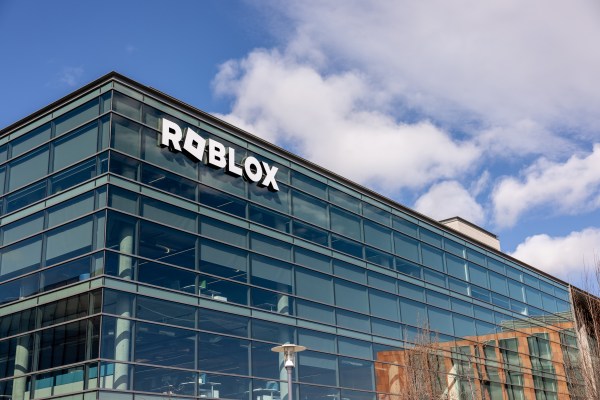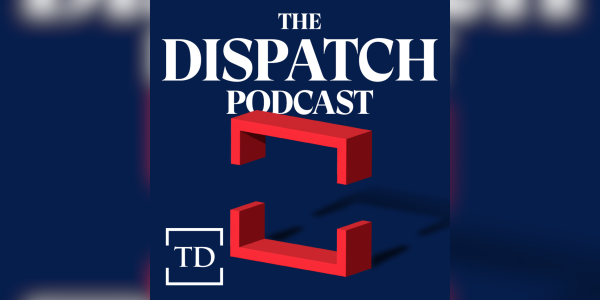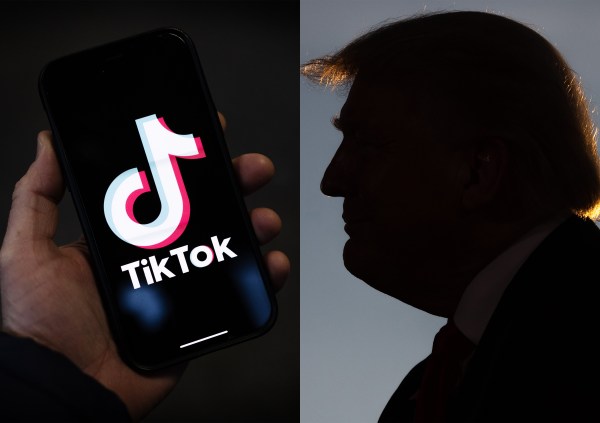Now that the politics have settled, it’s the right time to return to impeachment, examine it, and learn why it failed. It was only the third such trial in our history.
In one of its final reports, the New York Times, while calling the acquittal of Trump a “resounding victory” for the president, added, “both sides agreed that the final judgment on Mr. Trump will be rendered by voters when they cast ballots in just nine months.” Conventional wisdom holds that Senate Republicans were predetermined to acquit Trump of any charges.
While there’s a hint of truth to this conventional wisdom, it’s not the entire story. Impeachments, like elections, have political fundamentals at play. And so I’m entering this autopsy thinking of what drove the process, apart from the daily news cycle.
The impeachment power.
Partisanship is a foundational part of any impeachment. Writing in Federalist 65, Alexander Hamilton wrote that impeachment dealt with issues that were “POLITICAL, as they relate chiefly to injuries done immediately to the society itself.” He explained that any impeachment would “agitate the passions of the whole community” and create endless divisions. He also foresaw that “in such cases there will always be the greatest danger that the decision will be regulated more by the comparative strength of parties, than by the real demonstrations of innocence or guilt.”
Partisanship isn’t a sin in impeachment; it’s an effect we’re trying to control. We’re working within the framework of a federalist system, where James Madison said in Federalist 10, “the CAUSES of faction cannot be removed, and that relief is only to be sought in the means of controlling its EFFECTS.”
The parties being for and against their leaders and positions should not be shocking at any point during an impeachment—it’s the expectation. A successful impeachment has to take this into account and find a way to move past them, or generate a political force that overcomes latent partisanship.
Founders split the power between the legislative branches as a means of partially controlling partisanship and faction in impeachment. Article I, Section 2, gives the House “the sole Power of Impeachment.” That’s the only qualification on the House’s power of impeachment. Article I, Section 3, lays out a few more requirements on the Senate:
The Senate shall have the sole Power to try all Impeachments. When sitting for that Purpose, they shall be on Oath or Affirmation. When the President of the United States is tried, the Chief Justice shall preside: And no Person shall be convicted without the Concurrence of two thirds of the Members present.
And since we’re dealing with the president in this impeachment, we should also note that the Constitution says Article II, Section 4, that “The President … shall be removed from Office on Impeachment for, and Conviction of, Treason, Bribery, or other high Crimes and Misdemeanors.”
Jonah Goldberg correctly laid out the argument for what acts a president can get impeached for in a trial. What I’d add to understand the impeachment power is that while legally, there are no limits as to what the House and Senate could impeach the president over (like a well-done steak with ketchup or David French’s movie opinions, for instance), politically speaking, since a House impeachment requires a majority vote and the Senate a two-thirds vote for removal, the bar on impeachment is very high. If you can’t build a bipartisan consensus on impeachment, then it’s destined to fail.
As a historical note, it’s worth adding that at the time of the Constitution’s ratification, getting a simple majority in the House and a two-thirds majority in a Senate in a country with only 13 states was easier than it is now. As the Republic has grown, the political bar for impeaching and removing the president has risen, since it requires more votes among a diverse set of states and peoples. Also adding term limits to the presidency makes the argument for immediate removal even more difficult.
When Hamilton writes about what impeachment is trying to fix, he points to an “abuse or violation of some public trust.” That provides us with a pretty clear idea of what impeachment should provide in the end. It’s a political tool meant to restore public trust in the executive branch. Impeachment and removal should restore public confidence, and if it doesn’t, or public trust worsens, then the case for impeachment is weakened.
The House investigation.
The broad contours of House investigation are primarily known, and I won’t belabor them here. Nancy Pelosi launched the House impeachment inquiry on September 24, and it completed on December 3, making the investigation a little more than two months long. The Judiciary Committee drafted two articles of impeachment and voting them out of committee on December 13 on party lines. The final House vote on impeachment occurred on December 17 on party lines, with two Democrats joining Republicans in voting against the first article (abuse of power) and three voting against the second (obstruction of Congress).
All the political pressure on the House’s votes on articles of impeachment occurred in that window. Those dates set the stage for the political environment surrounding impeachment. Events that happened during impeachment did not occur in a vacuum—we’re in a presidential election year, with all representatives and one-third of senators up for re-election.
That’s a basic fact, but it matters. Here’s another fundamental point: Politicians faced two competing pressures on the impeachment vote: pressure from within their party, and pressure from the general election electorate. But while these are competing pressures, they did not experience both forces simultaneously.
The pressure from a politician’s base is at its strongest before a primary filing deadline when a late-entrant can challenge him or her. If the base wants an impeachment, and all national polling of Democrats showed about 80 percent did, with more than 80 percent of Republicans opposed, then sticking with the base may be necessary to avoid a primary challenge. Once that deadline passes, pressure comes from the general electorate.
Nancy Pelosi and the Trump administration both seemed acutely aware of these pressures. Remember, the impeachment inquiry launched on September 24. On September 25, the Washington Post was already reporting that Pelosi and House Democrats favored a “quick, narrow impeachment.” The Trump administration also understood the importance of the calendar in pressuring Democrats. In mid-November, NBC News reported:
The other element the administration is watching, according to the official, are the filing deadlines to get on the ballot for various House districts compared to when the House vote is held on impeachment. Here’s the thinking: Right now you have Democrats in battleground districts who, if the filing deadline for their district has passed and they’re going to sail through their primary, may be inclined to vote with Republicans against impeaching the president.
But if their filing deadlines haven’t passed, those Democrats could be vulnerable to a late-entry primary challenge from the left if they vote against impeachment, making them more likely to stick with Pelosi on the vote. The administration is hoping to peel off at least a few Democratic House members so that they can argue there was bipartisan opposition to impeaching and only partisan support for impeaching.
Pelosi’s emphasis on speed aimed at achieving the maximum amount of pressure possible on swing-district Democrats. This fact is why she was already saying, in October, that Democrats already had enough evidence for impeachment. And if you measure on a purely legal basis or Democratic base politics, that’s probably correct.
Seven states, including California, Texas, and Ohio, all have primary filing deadlines in November or December. The rest of the 43 states have periods from January through July (Louisiana is last with a July 17 deadline and a primary of November 3). This point should at least partly explain why Democrats were so focused on a Christmas deadline for impeachment in the House. The longer impeachment went on, the weaker Pelosi’s hold over her members would have been as more and more representatives faced general election politics and not a primary.
But if speed had the effect Pelosi needed on House Democrats, it had the complete opposite impact on House Republicans. Republicans may have had the most straightforward defense of all in t he House: They could point to the fact the impeachment was getting rammed through, with no input from them, which meant they could oppose it with little blowback.
Remember, impeachment is both political and legal. So while you can quickly point to the readout of Trump’s call with Ukrainian President Volodymyr Zelensky and say that it contains everything you need, legally speaking, to impeach, that’s not the same as having built the political support for impeachment. In focusing on political expediency, Democrats chose not to make the political case for impeachment or removal.
This Republican defense of Trump comes through even with representatives who didn’t have any skin in the political game. Will Hurd, who is retiring, said, “An impeachable offense should be compelling,” and, “It’s not something to be rushed or taken lightly. I have not heard evidence proving the president committed bribery or extortion.” At a bare minimum, you should be able to convince those with no pressure on them, and there’s little evidence Democrats ever really tried.
Pelosi’s tactic kept her party in line while preventing the White House from picking off more than a few stragglers. House Democrats won the battle with their base, only to lose the more significant political war with Republicans. Speed winneth, and it taketh away.
The Senate trial.
The same political pressures in the House applied to the Senate trial as well. The same forces that drove Nancy Pelosi to focus more on the accelerator than substance for impeachment also compelled Mitch McConnell to grind out long hours, day and night, in the Senate to end the trial.
The Senate trial started, officially after Pelosi submitted the article of impeachment, on January 16, and the final vote was held on February 5, just shy of three weeks. Varad Mehta noted the primary calendar for Republicans running for office, and the bulk of them had deadlines or primaries in March. That means the pressure of a primary is the far more pressing concern for these senators than the general election, same as the House.
There are two subplots here worth exploring. The first is the vote over witnesses, and the second is the stance of Senator Lamar Alexander, who, like Will Hurd, is retiring after his term and voted against both impeachment and new witnesses.
More witnesses?
After John Bolton dropped a few revelations from his forthcoming book on his time in the White House, the big debate was whether or not the Senate should call new witnesses, specifically Bolton. The Wall Street Journal reported that McConnell was telling people that he didn’t have the votes to block witnesses. By the end of that week, though, it was clear that neither Bolton nor more witnesses were coming. What happened?
The reality of the situation is that politics dictated that calling one witness was never going to happen. The only realistic option was opening Pandora’s Box of all witnesses or calling no one at all. CNN reported that it was Ted Cruz who first drew this line:
Cruz made clear, first privately to McConnell, then to the conference more broadly over several meetings, that any agreement to move forward on witnesses would include more than just a subpoena for Bolton. It would include subpoenas for Hunter Biden. And the whistleblower. And perhaps Joe Biden, too.
The message wasn’t subtle: Go down this road and it will get messier by the day. It won’t be quick, nor will it be easy.
If you look at a witness list that includes people like Joe Biden, or Adam Schiff as other reports indicated, you might scoff. And that’s the point. Senate Republicans took the potential testimony of John Bolton, which Democrats wanted, and attached a long list of potential witnesses they didn’t want. It was a poison pill. If Bolton was going to get subpoenaed, then so was everyone else the Trump team wanted, including both Bidens as well as Schiff. The point wasn’t the substance, it was forcing the media and Democrats to reject that request.
Furthermore, the poison pill showed wavering Republicans that calling new witnesses would be an incredibly messy ordeal, politically, and unlikely to change any minds. The tactic paid off, everyone backed down, and the witness demands ended.
All of which brings us to the second point, Lamar Alexander’s statement on witnesses. Yes, there was a final vote held on both articles, but the moment the impeachment trial ended was when Alexander released this statement against new witnesses.
The most interesting aspect of Alexander’s statement is that he used Democrats’ arguments against them. He said, “There is no need for more evidence to prove” any of the allegations because the Senate already has the evidence, and that they had spent “nine long days considering this ‘mountain’ of evidence.” These are all things Pelosi, Schiff, and other Democrats had said in defending the speed of the House inquiry.
Democrats never answered why new witnesses were needed, if there was a mountain of evidence and the House inquiry did its job. Politically, Democrats were playing the primary calendar, trying to force Senate Republicans to focus on the general election as opposed to potential primary challengers.
Alexander ended his statement by saying, “The question then is not whether the president did it, but whether the United States Senate or the American people should decide what to do about what he did.” He continued:
The framers believed that there should never, ever be a partisan impeachment. That is why the Constitution requires a 2/3 vote of the Senate for conviction. Yet not one House Republican voted for these articles. If this shallow, hurried and wholly partisan impeachment were to succeed, it would rip the country apart, pouring gasoline on the fire of cultural divisions that already exist. It would create the weapon of perpetual impeachment to be used against future presidents whenever the House of Representatives is of a different political party.
In this paragraph, he correctly lays out the purpose of impeachment and why Democrats failed to meet that burden. Impeachment, as described above, is about restoring a breach of trust committed by the president. Ramming through a rushed and hurried impeachment doesn’t fix that breach of trust by the president, it only exacerbates it and widens the divisions. Preventing that from happening means letting the public vote on the issue in November.
Final thoughts.
You may have noticed I didn’t focus much on the substance of the charges. That’s on purpose. Most of the testimony provided did very little to move the needle, either with the public or anyone in Congress. In both the FiveThirtyEight and RealClearPolitics poll averages, there was an initial surge of support for impeaching and removing the president. That surge faded over time and polls ended up statistically tied with little movement.
In the months of cable news coverage and breathless reporting, there does not appear to be a single “big” news item that reshaped public opinion or moved polls. If anything, the mood on impeachment started tracking Donald Trump’s approval rating. If the individual news stories didn’t matter or shape impeachment, that suggests the political fundamentals described here did more to move impeachment forward than any single news story or cycle, for better or worse.
Judging by the polls, it looks like there was a moment, early on, when Democrats had a chance to build a coalition. Support and opposition flipped sides for the first time in the polling averages. It’s somewhat reminiscent of a vignette in Tim Alberta’s book American Carnage, where Obama, Pelosi, and Reid decided to cut Republicans out of the discussion in the early economic recovery negotiations. That political mistake cost Democrats severely from that moment forward. Pelosi made a similar calculation here, rammed impeachment through without attempting to build a coalition, and it cost her on the substantive and political front.
If Democrats wanted impeachment to end with Trump’s removal from office, they needed to produce evidence or testimony that proved more politically significant than the primary calendar. As it is, Democrats never presented evidence that surpassed the readout of the phone call. The primary calendar incentivized Democrats to move fast. It incentivized the Trump administration to cover everything in executive privilege to slow the process.
Let that be a lesson to future impeachments. If you want to succeed, you have to build political momentum behind it and change the political dynamics of the political calendar. Politicians have to get incentivized to move, and at no point was anyone forced off the fundamentals underneath them.
Photograph by Astrid Riecken/Washington Post/Getty Images.






Please note that we at The Dispatch hold ourselves, our work, and our commenters to a higher standard than other places on the internet. We welcome comments that foster genuine debate or discussion—including comments critical of us or our work—but responses that include ad hominem attacks on fellow Dispatch members or are intended to stoke fear and anger may be moderated.
With your membership, you only have the ability to comment on The Morning Dispatch articles. Consider upgrading to join the conversation everywhere.